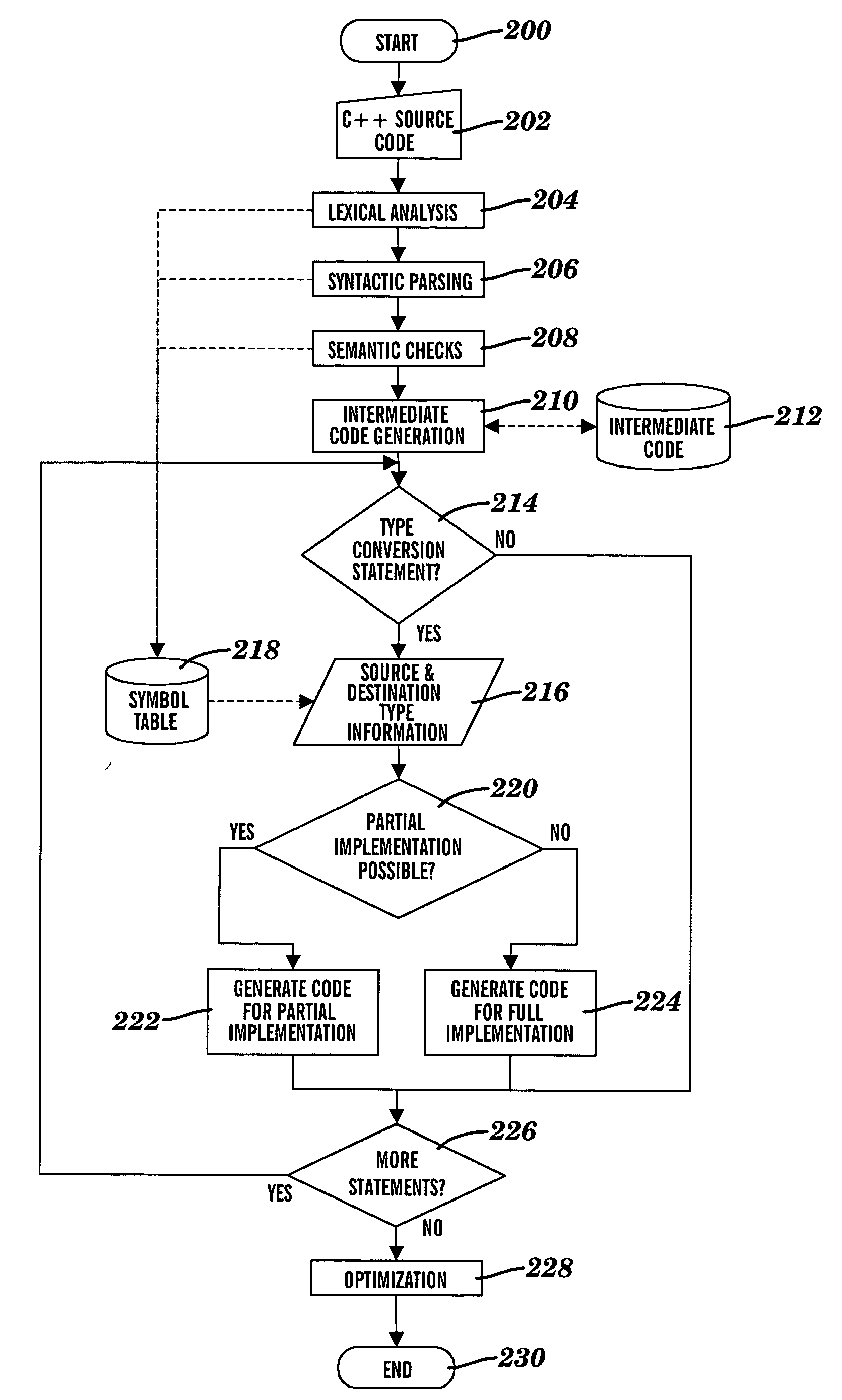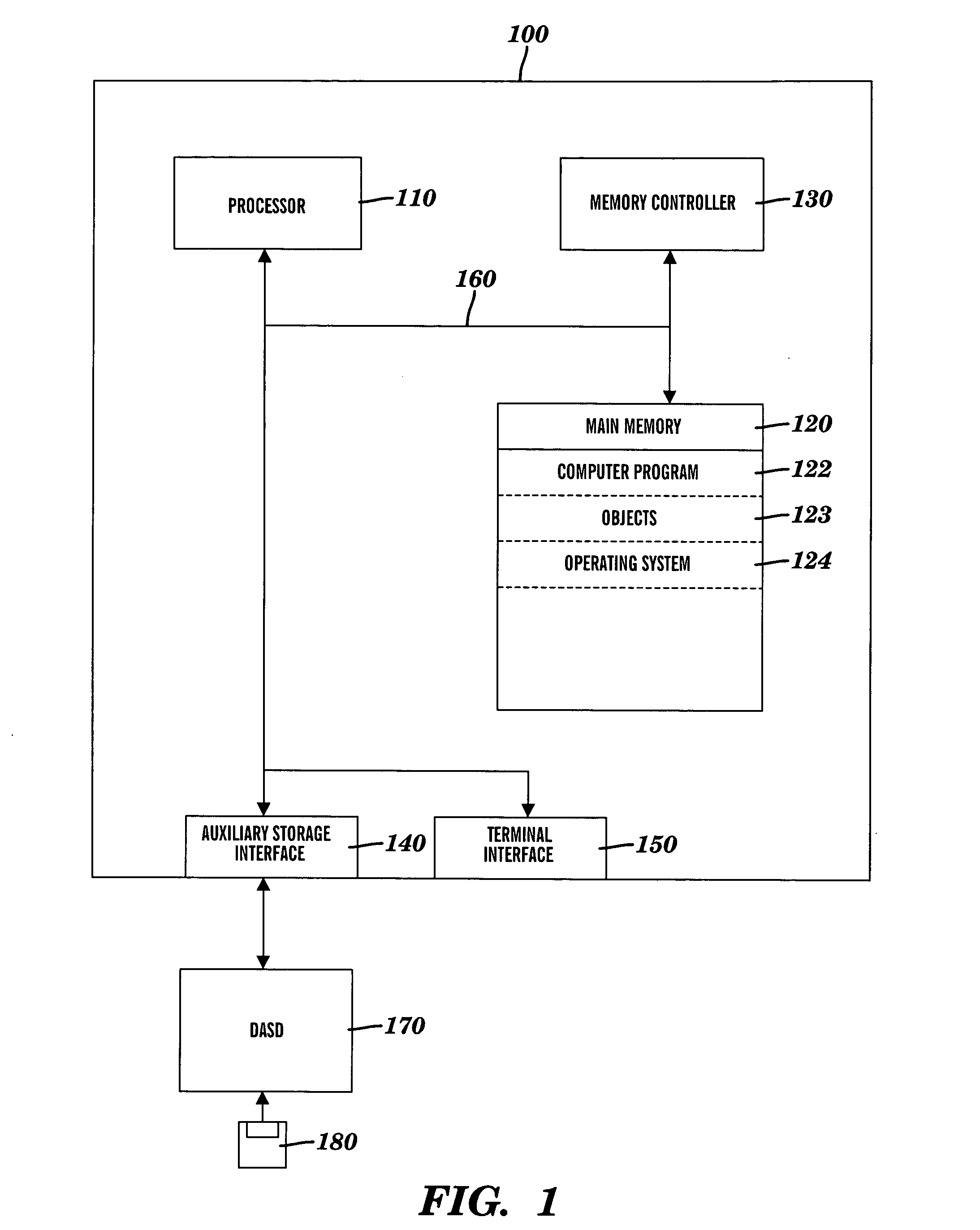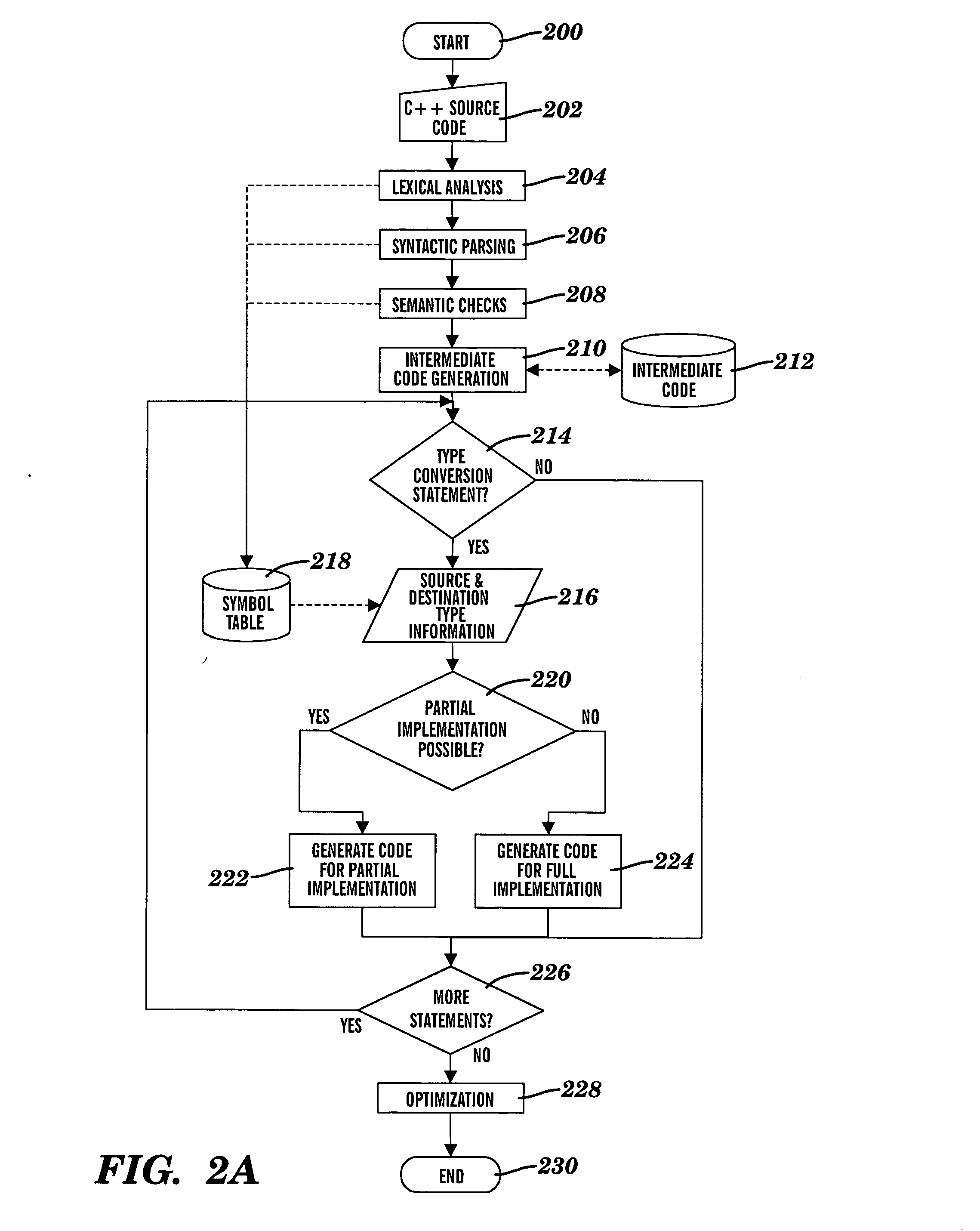Run-time type conversion
a type conversion and runtime technology, applied in the field of runtime type conversion, can solve the problems of unattractive burdens caused by space requirements and/or execution achieve the effect of reducing execution and space costs of object operations, avoiding temporary storage of class or object information and complex programming and execution and space costs associated
- Summary
- Abstract
- Description
- Claims
- Application Information
AI Technical Summary
Benefits of technology
Problems solved by technology
Method used
Image
Examples
implementation examples
Full Implementation Examples
[0106]FIG. 10 depicts a table of examples of full implementation run-time class conversions of FIG. 4B, which employ the hierarchy of FIG. 2B, and which list types of intermediate full implementation conversions of FIGS. 5B, 6B, 7B &8B needed for each example, in accordance with embodiments of the present invention. In the table of FIG. 10, an entry of “up conversion” indicates a simple up conversion of FIG. 5B and an entry of “down conversion” indicates a simple down conversion of FIG. 7B.
[0107] The first conversion example (listed under the desired conversion column) in the table in FIG. 10 is class B (source) to class D (destination). The destination class is not polymorphic to the source class (i.e., class D is not derived from class B). Relating this class B to class D conversion to the employee database example discussed above, the object (employee) whose class is to be converted is relieved of his or her old duties. For example, an employee initia...
PUM
 Login to View More
Login to View More Abstract
Description
Claims
Application Information
 Login to View More
Login to View More - R&D
- Intellectual Property
- Life Sciences
- Materials
- Tech Scout
- Unparalleled Data Quality
- Higher Quality Content
- 60% Fewer Hallucinations
Browse by: Latest US Patents, China's latest patents, Technical Efficacy Thesaurus, Application Domain, Technology Topic, Popular Technical Reports.
© 2025 PatSnap. All rights reserved.Legal|Privacy policy|Modern Slavery Act Transparency Statement|Sitemap|About US| Contact US: help@patsnap.com



